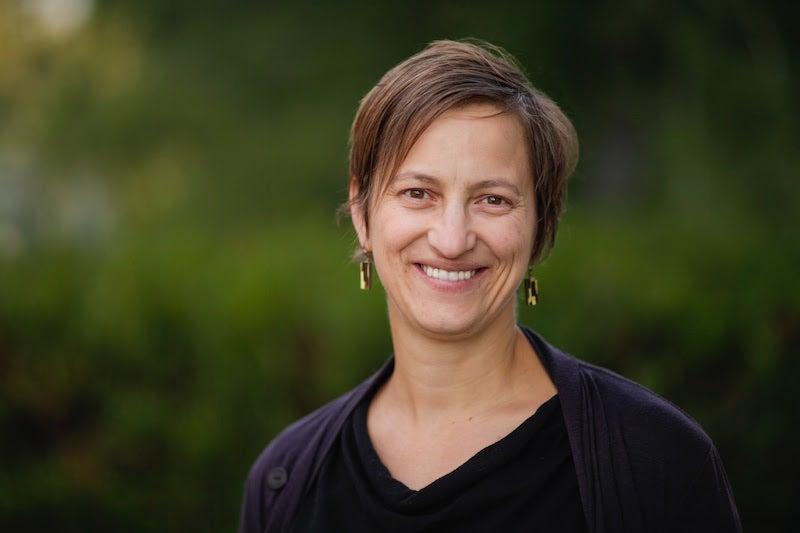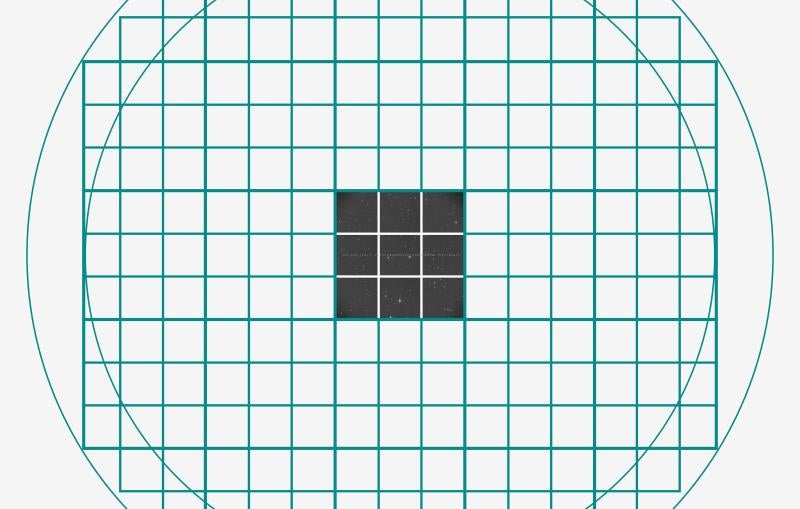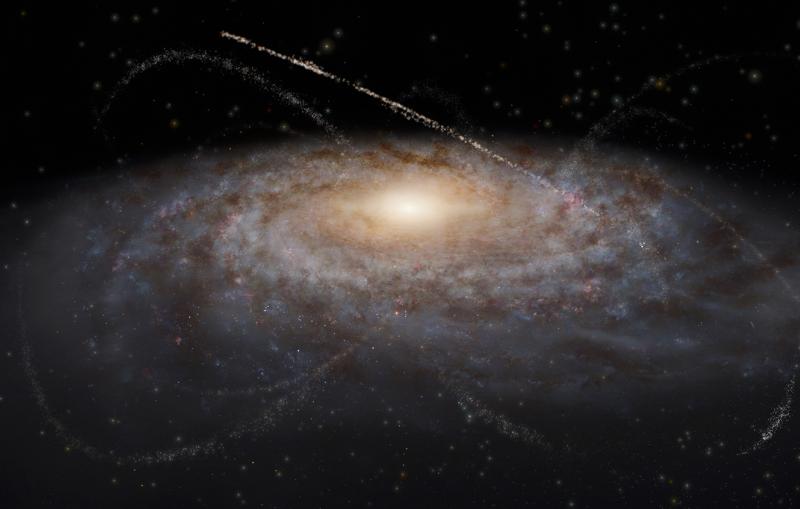SLAC’s Risa Wechsler Named American Physical Society Fellow
The astrophysicist is recognized for her leadership, mentorship and innovative work in understanding how galaxies form.
By Monica Friedlander
Attempting to model and measure the distribution of 300 million galaxies is not a job for the faint of heart.
That’s exactly the challenge that has been undertaken by Risa Wechsler, associate professor of physics and astrophysics at SLAC and Stanford, who was recently named fellow of the American Physical Society. Wechsler was elected for her pioneering work in understanding galaxy formation and for her leadership in large survey projects.
“If you study that many galaxies you can learn something about how they evolve over time, as well as how they trace the underlying matter distribution,” Wechsler said. “I work at the interface of galaxy formation and the formation of structure in the universe as a whole.”
Searching in the Darkness
Wechsler’s research focuses on the link between visible matter and the invisible realm: dark matter and dark energy. Visible matter makes up less than 5 percent of the known universe and its hundreds of billions of galaxies, with dark matter and dark energy accounting for the rest. Dark matter differs from regular matter in that it does not emit and absorb light. The universe is believed to have started with dark matter, which provides the framework — or scaffolding — on which galaxies form. The gravitational pull from dark matter plays a key role in galaxy formation.
“Gravity pulls matter, making it clumpy,” Wechsler explains. “Once we get regions of the universe that are clumpy enough and dense enough, gas falls to the center and starts forming stars and galaxies. This process seems to require dark matter.”
Dark energy is very different from dark matter. It is not matter at all but a property of space itself, responsible for accelerating the expansion of the universe. “The idea is that space itself has some energy density that can repel it from other space,” Wechsler says. “When you have more matter, gravity will pull things together more quickly. When you have more dark energy, space will expand more.”
While dark matter and dark energy are entirely different concepts — polar opposites in terms of their impact on matter and space — they can be studied using similar approaches. Wechsler is playing a leading role in teams conducting large surveys of galaxies. She and her group then compare these observations against computer simulations combined with models of galaxy formation. She thinks of these simulations as models of hypothetical universes, which she compares to the experimental data to test their validity.
Powerful Telescopes, Powerful Theory
To study galaxies deep into space and time, Wechsler uses the Hubble Space Telescope, including measurements from a large survey called CANDELS. But to survey the largest area of the sky possible, ground-based telescopes are the instruments of choice. Over the last 10 years, Wechsler has played key roles in developing theory and analytical tools for a number of large surveys.
The Dark Energy Survey (DES), a large international collaboration that includes SLAC, is conducting a five-year survey mapping those 300 million galaxies Wechsler is measuring. She has been a member of DES since the project’s inception. The Dark Energy Spectroscopic Instrument (DESI), for which Wechsler is the co-spokesperson, explores the role of dark energy in the expansion of the universe. DESI, expected to start taking data by the end of 2019, will map the 3-D structure of the universe using the spectra of 35 million galaxies.
“That’s super cool because we’ll have about a third of the sky surveyed,” she said. The data from DESI will address her three main interests: gaining a better understanding of the universe’s expansion rate and dark energy, of how galaxies evolved over time, and of the properties of dark matter.
The Large Synoptic Survey Telescope (LSST), whose ultrasensitive telescope is being assembled at SLAC, will be the largest optical astronomy project of the next decade, says Wechsler, who serves on LSST’s Science Advisory Committee.
“We do all these observations but we also need a theoretical context,” Wechsler says. To that end she compares these observations to large simulations that are run on large supercomputers at the rate of tens of millions of CPU hours. Wechsler has pioneered new approaches to galaxy formation modeling that have enabled making the connection between the simulations and massive observational data sets.
Leading and Mentoring
Wechsler has done this work at the Kavli Institute for Particle Astrophysics (KIPAC), a joint project of SLAC and Stanford. Before joining Stanford and SLAC, Wechsler was a Hubble Fellow at the University of Chicago. She received her PhD in physics from the University of California, Santa Cruz and her SB in physics from the Massachusetts Institute of Technology.
The APS Fellowship Program was created to recognize members who may have made advances in physics through original research and publication, or made significant innovative contributions in the application of physics to science and technology. They may also have made significant contributions to the teaching of physics or to service and participation in the activities of the society. “It’s an honor to receive this recognition from my colleagues for my contributions to the field,” says Wechsler.
Wechsler’s APS fellow citation also points to her work with young scientists. “I want to make sure that scientists from all different backgrounds can flourish and do their best work,” she says. “This is one of the greatest joys of being a professional scientist.”
KIPAC Director Tom Abel says, “We are thrilled by the APS recognition of Risa’s work. The citation correctly characterizes her wonderful ability to work making small and large teams successful and learn as much about the universe as the data allows.”
For questions or comments, contact the SLAC Office of Communications at communications@slac.stanford.edu.
SLAC is a multi-program laboratory exploring frontier questions in photon science, astrophysics, particle physics and accelerator research. Located in Menlo Park, Calif., SLAC is operated by Stanford University for the U.S. Department of Energy's Office of Science.
The Kavli Institute for Particle Astrophysics and Cosmology (KIPAC) is a joint institute of SLAC National Accelerator Laboratory and Stanford University. Initiated by a generous grant from Fred Kavli and the Kavli Foundation, KIPAC was formed to serve as a bridge between the disciplines of astrophysics, cosmology and particle physics. For more information, visit kipac.stanford.edu.
SLAC National Accelerator Laboratory is supported by the Office of Science of the U.S. Department of Energy. The Office of Science is the single largest supporter of basic research in the physical sciences in the United States, and is working to address some of the most pressing challenges of our time. For more information, please visit science.energy.gov.






